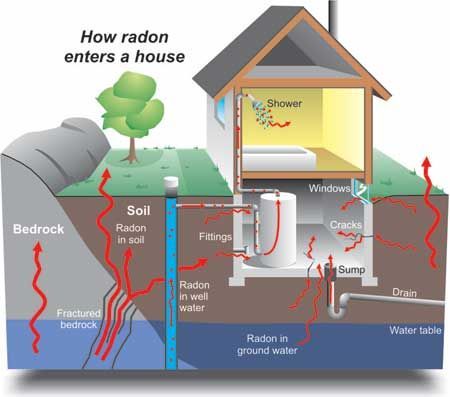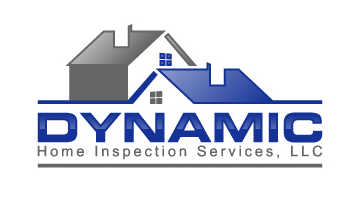10+ YEARS PROVIDING ACCURATE & TRUSTWORTHY HOME INSPECTIONS ACROSS THE CHICAGOLAND AREA! CALL (847) 721-0630 TO GET YOUR HOME INSPECTED!
RADON TESTING
Any home can have a radon problem. This means new and old homes, well-sealed and drafty homes and homes with or without basements. In fact, you and your family are most likely to get your greatest radiation exposure at home. That is where you spend most of your time.

Certification by the National Radon Safety Board as a Radon Measurement Specialist (RMS) requires demonstration of knowledge which goes significantly beyond that required of a technician. In addition to basic training in the rudiments of radon measurements, the certified RMS must demonstrate a basic knowledge of radiation physics, an understanding of risk assessment, the epidemiological evidence of radon health risks, and the differences between various devices and techniques for measuring radon and radon decay products. The NRSB certified Radon Measurement Specialist must also understand the importance of radiation safety and be capable of designing and implementing a quality assurance program.
What is Radon?
Radon is a cancer causing, radioactive gas. It comes from a natural breakdown of uranium in the soil, rock and water and gets into the air you breathe. Radon typically moves up through the ground to the air above and into your home through cracks, expansion joints and other holes in the foundation.

Why should I test for Radon?
Nearly one out of every 15 homes in the United States is estimated to have an elevated radon level (4pCi/L or more)
I have never heard of radon. Is it really that dangerous?
You cannot see, smell, or taste radon. But it still may be a problem in your home. When you breathe air containing radon, you increase your risk of getting lung cancer. In fact, the Surgeon General of the United States has warned that radon is the second leading cause of lung cancer in the United States today. If you smoke and your home has high radon levels, your risk of lung cancer is especially high.
Is radon really as dangerous as cigarette smoke?
Radon is regarded as a Group A carcinogen; that is, it is known to cause cancer in humans with prolonged exposure. It has been shown in carefully controlled studies on animals, and on hard-rock miners, and most recently confirmed in residential case-control studies, that the effects of radon gas can significantly increase the potential of lung cancer.
The United States Environmental Protection Agency and Surgeon General recommend that people not have long-term exposures in excess of 4.0 pico Curies per liter (pCi/L). The EPA estimates that radon causes thousands of cancer deaths in the U.S. each year. Radon is estimated to cause about 21,000 lung cancer deaths per year, according to EPA’s 2003 Assessment of Risks from Radon in Homes (EPA 402-R-03-003).
You can’t see radon, but it’s not hard to find out if you have a radon problem in your home. All you need to do is test for radon. Testing is easy and accurate if done by a qualified radon tester. The amount of radon in the air is measured in “picocuries per liter of air,” or “pCi/L.” If you are buying or selling a home, have had (or are considering) a radon mitigation system installed, or are wanting to ensure the safety of your home you can hire a qualified tester to do the testing for you.
SHORT-TERM TESTING
The quickest way to test is with short-term tests. Short-term tests remain in your home for two days to 90 days. Normally most tests last 48 hours after a 12-hour environmental preparation time, referred to as “closed house conditions”. Closed-house conditions means keeping all windows closed, keeping doors closed except for normal entry and exit, and not operating fans or other machines which bring in air from outside. Fans that are part of a radon-reduction system or small exhaust fans operating for only short periods of time may run during the test. Running of air conditioning and heat systems, as long as they don’t bring in any outside air, are ok to run.
Dynamic Home Inspection Services uses electret ion chamber (EIC) and continuous radon monitors (CRM) for short-term testing. EIC’s will give you an overall average of the radon levels at the end of the test. CRM’s will sample the radon levels every hour (and log the levels) for the duration of the test as well as giving you the average at test completion. The advantage of the CRM is that you will be able to see how levels change hour to hour. This is especially important if you have a radon mitigation system and want to ensure it is working correctly.
POST MITIGATION TESTING
If you have decided to have your home mitigated to lower your radon levels it is recommended that you have it tested before, during and after the mitigation process to ensure the work was done correctly. Dynamic Home Inspection Services, LLC is not connected to any mitigation company so you can be sure that your test results will show if the mitigation equipment is effective in lowering your radon levels. To do this we will place a continuous radon monitor (CRM) in the home just prior to the installation to measure the levels of radon per hour during the installation and after the work is completed. If the mitigation system is working you should see a drop in radon levels after the work is completed. Our CRM’s have sensors to insure they are not tampered with providing you an additional level of confidence in your new radon mitigation system.
RESULTS
If you have decided to have your home mitigated to lower your radon levels it is recommended that you have it tested before, during and after the mitigation process to ensure the work was done correctly. Dynamic Home Inspection Services, LLC is not connected to any mitigation company so you can be sure that your test results will show if the mitigation equipment is effective in lowering your radon levels. To do this we will place a continuous radon monitor (CRM) in the home just prior to the installation to measure the levels of radon per hour during the installation and after the work is completed. If the mitigation system is working you should see a drop in radon levels after the work is completed. Our CRM’s have sensors to insure they are not tampered with providing you an additional level of confidence in your new radon mitigation system.
© 2025 Dynamic Home Inspection Services, LLC. All Rights Reserved.
